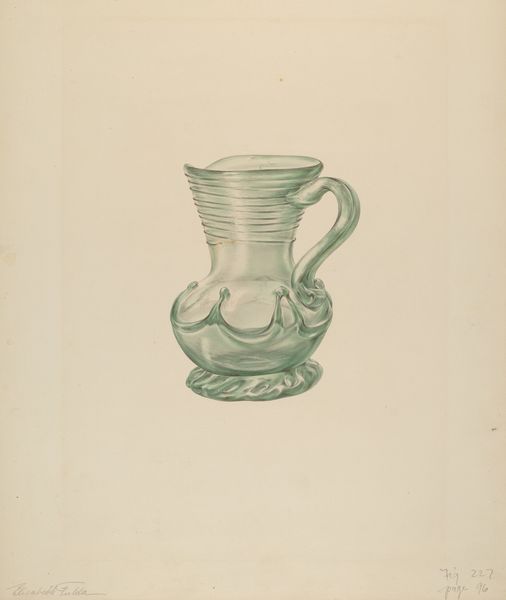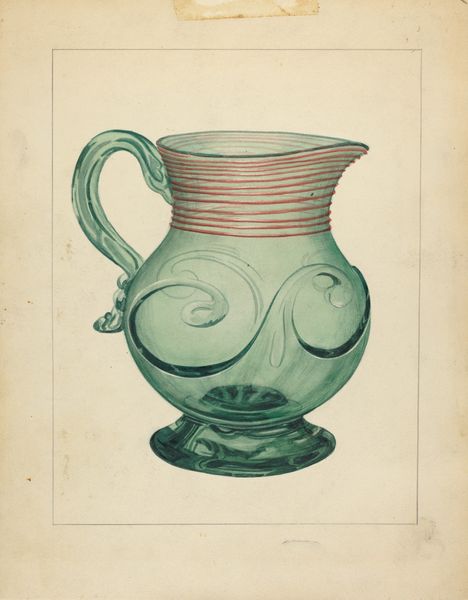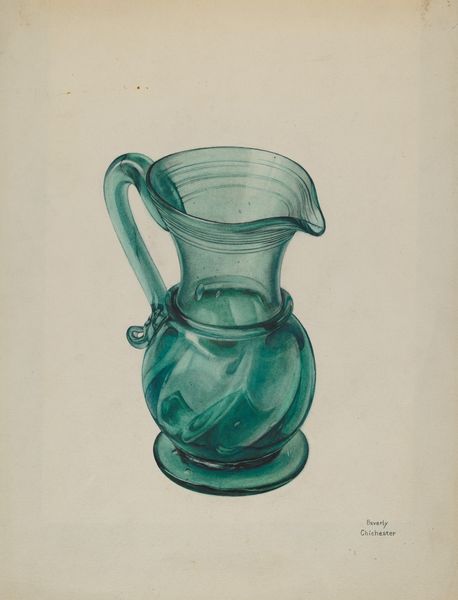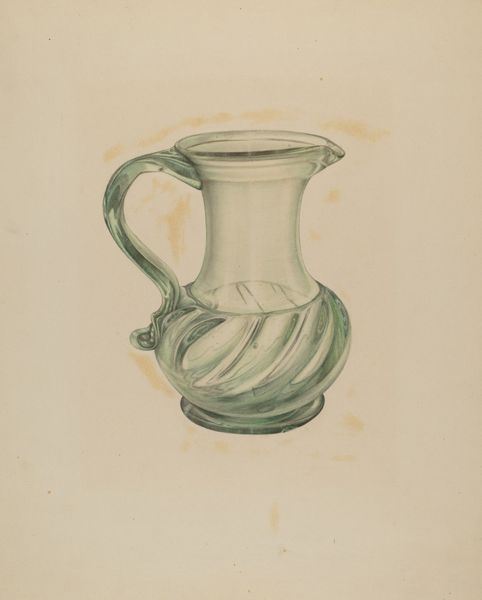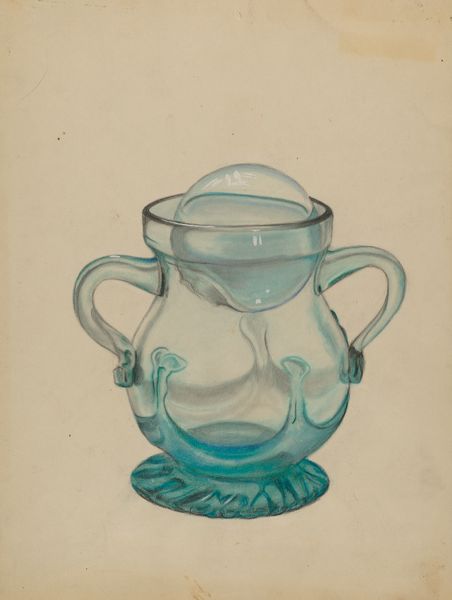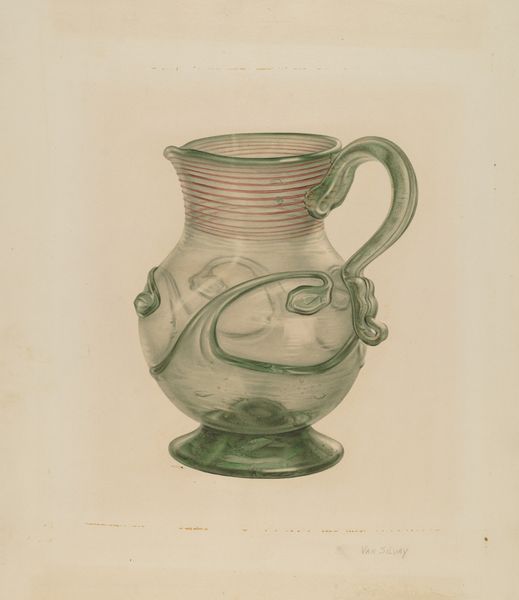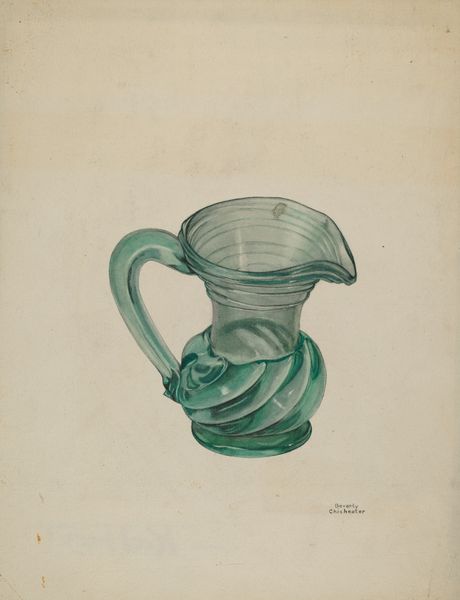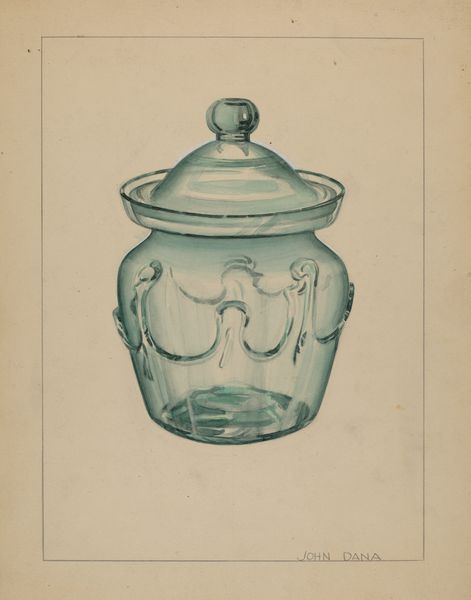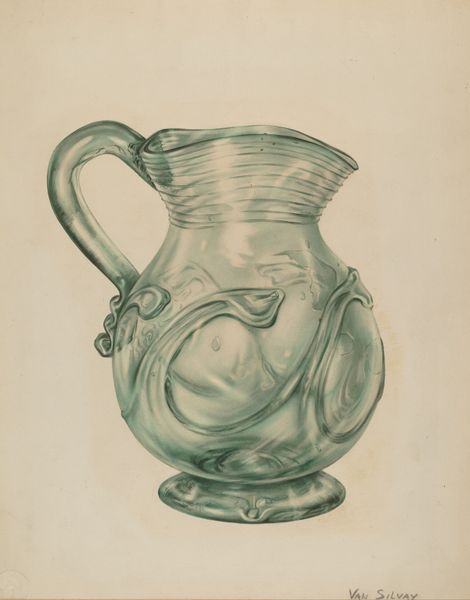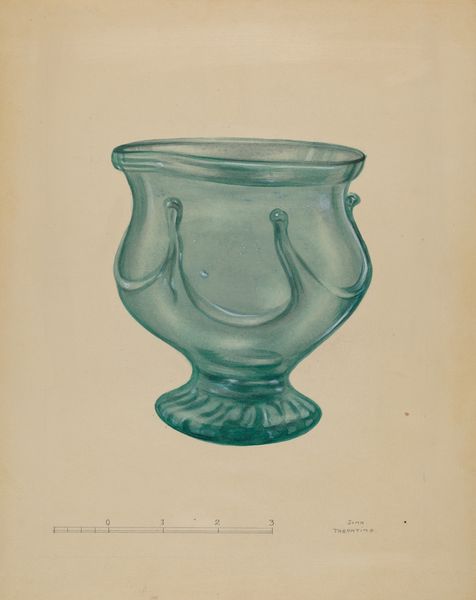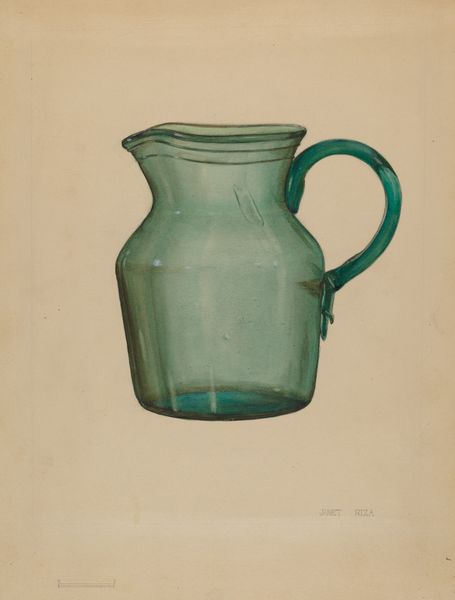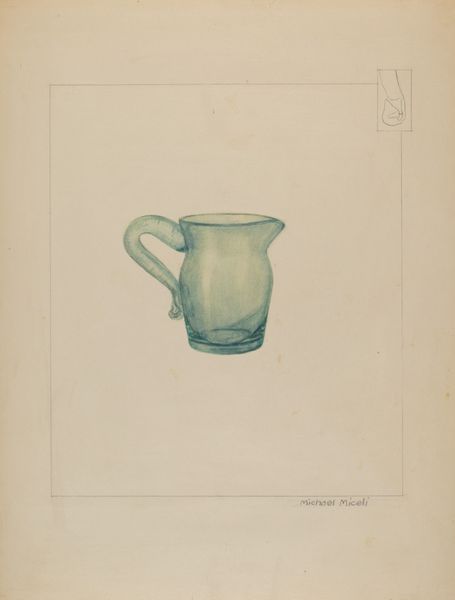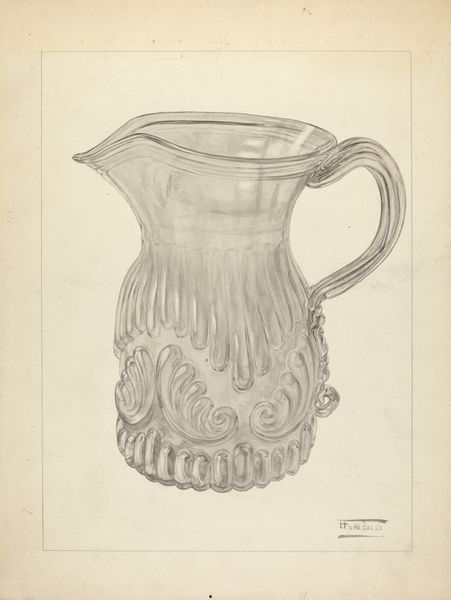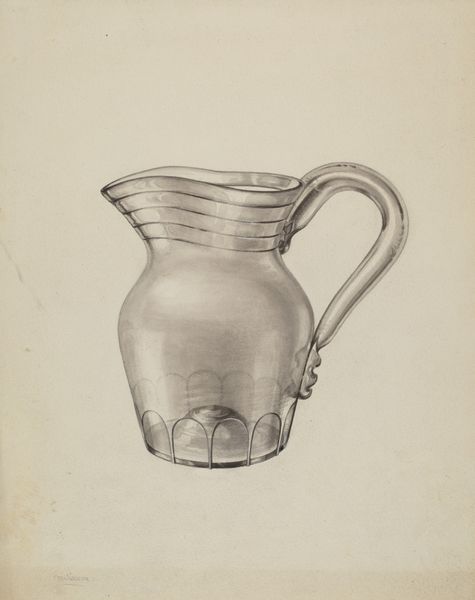
drawing, coloured-pencil
#
drawing
#
coloured-pencil
#
pencil drawing
#
coloured pencil
#
academic-art
Dimensions: overall: 29 x 22.8 cm (11 7/16 x 9 in.)
Copyright: National Gallery of Art: CC0 1.0
Editor: Here we have John Tarantino's "Sugar Bowl," made around 1936 using colored pencils. The smoothness of the bowl contrasts so sharply with the hard, sharp lines of the base. What do you see when you look at this piece? Curator: The piece compels a focused, near-obsessive analysis of form and surface. Consider the cylindrical body topped by a spherical lid; each reflects and refracts light, thanks to the subtle gradations of the coloured pencil. It invites contemplation of the material, line, tone, and the implied symmetry. Editor: Implied symmetry? Curator: Note how the handles are imperfect mirrors of each other, and how the reflections within the glass are not quite aligned. The deviations invite a deeper consideration of the artist's hand and process. It's less about replicating reality, and more about interpreting it. Do you notice how the base adds an almost baroque touch to the otherwise streamlined design? Editor: I see that now! So, you're saying that the little imperfections in the depiction of the sugar bowl and the style contrast between the base and the top push us to look closer? Curator: Precisely. The slight irregularities within a structured form stimulate visual interest. By diverging from pure replication, the artist compels us to actively participate in deciphering the object, leading to a more nuanced experience of the image. Editor: It's fascinating how focusing on these small variations changes my understanding of the entire work. Curator: Yes! By embracing formalism, we gain insights into the artistic intent. There are many formal devices that could have been easily changed; the ones selected speak loudly to artistic decisions.
Comments
No comments
Be the first to comment and join the conversation on the ultimate creative platform.
